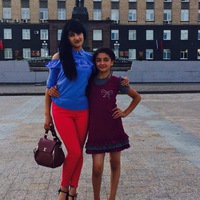
Какой след в истории человечества оставила культура средневековья?
 0
0
 0
0
Ответы на вопрос
 Внимание! Ответы на вопросы дают живые люди. Они могут содержать ошибочную информацию, заблуждения, а также ответы могут быть сгенерированы нейросетями. Будьте внимательны. Если вы уверены, что ответ неверный, нажмите кнопку "Пожаловаться" под ответом.
Внимание! Ответы на вопросы дают живые люди. Они могут содержать ошибочную информацию, заблуждения, а также ответы могут быть сгенерированы нейросетями. Будьте внимательны. Если вы уверены, что ответ неверный, нажмите кнопку "Пожаловаться" под ответом.

ремесло,земляную культуру,письменность.
 0
0
 0
0

The Impact of Medieval Culture
The culture of the Middle Ages, also known as medieval culture, left a significant mark on the history of humanity. This period, which lasted from the 5th to the 15th century, witnessed the development of various aspects of society, including art, architecture, literature, religion, and education. The influence of medieval culture can still be seen today in many aspects of our modern world.
Art and Architecture: Medieval art and architecture were characterized by a distinct style that reflected the religious and social values of the time. Gothic architecture emerged during this period, featuring pointed arches, ribbed vaults, and flying buttresses. Cathedrals such as Notre-Dame in Paris and Chartres Cathedral in France are prime examples of this architectural style. Medieval art also included illuminated manuscripts, stained glass windows, and intricate sculptures.
Literature and Philosophy: Medieval culture saw the development of significant literary works that continue to be studied and appreciated today. The Canterbury Tales by Geoffrey Chaucer, The Divine Comedy by Dante Alighieri, and Beowulf are just a few examples of the literary masterpieces of the Middle Ages. These works explored themes such as chivalry, morality, and the human condition. Medieval philosophy, influenced by the works of philosophers like Thomas Aquinas, focused on reconciling faith and reason.
Religion and Spirituality: Religion played a central role in medieval culture, with Christianity being the dominant faith. The Catholic Church held immense power and influence during this period. Monasticism, the practice of living in religious communities, flourished, and monasteries became centers of learning and preservation of knowledge. The construction of grand cathedrals and the development of religious art were expressions of the deep religious devotion of the time.
Education and Scholarship: Medieval culture also made significant contributions to education and scholarship. Universities began to emerge during this period, with institutions such as the University of Bologna and the University of Paris becoming centers of learning. Scholars focused on subjects like theology, philosophy, law, and medicine. The establishment of universities laid the foundation for the development of higher education systems that continue to exist today.
Social Structure and Feudalism: The social structure of medieval society was characterized by feudalism, a hierarchical system in which land was granted in exchange for military service and loyalty. The feudal system shaped the relationships between lords, vassals, and serfs. The code of chivalry, which emphasized honor, loyalty, and bravery, was an integral part of medieval society and influenced the behavior of knights and nobles.
Conclusion
The culture of the Middle Ages left a lasting impact on the history of humanity. From the magnificent cathedrals and artistic masterpieces to the development of universities and the influence of religious institutions, medieval culture shaped various aspects of society. Its influence can still be seen today in our architecture, literature, and societal structures. The Middle Ages were a time of great change and development, and the cultural legacy of this period continues to be appreciated and studied.
 0
0
 0
0
Топ вопросов за вчера в категории История
Последние заданные вопросы в категории История
-
Математика
-
Литература
-
Алгебра
-
Русский язык
-
Геометрия
-
Английский язык
-
Химия
-
Физика
-
Биология
-
Другие предметы
-
История
-
Обществознание
-
Окружающий мир
-
География
-
Українська мова
-
Информатика
-
Українська література
-
Қазақ тiлi
-
Экономика
-
Музыка
-
Право
-
Беларуская мова
-
Французский язык
-
Немецкий язык
-
МХК
-
ОБЖ
-
Психология
-
Физкультура и спорт
-
Астрономия
-
Кыргыз тили
-
Оʻzbek tili





















